Sacramento Mile Double Up
Yamaha-mounted Cory Texter clinched the 2021 AFT Production Twins title with hard-fought wins on both days of the Sacramento double-header.
Words+Photos: Mike Blanchard
After a year layoff, the AMA Progressive Flat Track series came back to the Sacramento Mile at the Cal Expo Fairgrounds on a blistering hot September weekend for a Saturday-Sunday double-header run as if it were two races.
Former National Champion, and star of the film “On Any Sunday,” Mert Lawwill was checking out the races on Saturday.
The Sacramento Mile has a long history as a venue for motorcycle racing. The track is featured most famously in the classic motorcycle film “On Any Sunday.” So it was rather fitting that one of the first people I saw at the track Saturday was Mert Lawwill, one of the stars of the film.
The grandstand at Cal Expo is a big, cantilevered, concrete Mid-Century Modern affair with a cave-like concourse facing the track tucked up under the seats. A good place to retreat from the sun beating down on the track and cool off. On Saturday, deep in the back of the cave, there was a long table with a number of flat-track legends greeting the fans and signing autographs.
Flat-track racing is the oldest type of motorcycle racing in America and in organized form has been run continuously since the 1920s. The governing body is the American Motorcyclist Association or AMA
Flat-track these days features three classes: Singles, Production Twins and Super Twins. The Singles are based on 450cc four-stroke motocross bikes.
The Production Twins use stock, or OEM, engine cases from production engines of up to 800cc. Even though they are tagged Production the only stock parts they use are the engine cases and sometimes the gearbox. Every other part of the bike is custom made.
The Super Twins use specially produced racing engines of up to 900cc displacement.
Virtually all of the twins bikes use either J&M or C&J frames with purpose built suspension. The exceptions being the Indians and Harleys which have factory made race frames. Both of the twins classes will do north of 140 miles-per-hour and the singles almost 120.
For many years this type of racing was dominated by Harley Davidson XR750s, with a few Triumphs, BSAs and Yamaha bikes thrown in for a little variety, but heavily regulated so as not to give the Harleys too much trouble.
Race bikes lined up in the Honda pits. These bikes run in the AFT Singles class.
At the moment, Indian’s FTR750 is the dominant bike in the Super Twin class but Harley Davidson XG750R is right there with it. In the Production Twins class there are competitive bikes from Indian, Yamaha, Kawasaki, Ducati and Harley Davidson.
The Singles are converted from motocross race bikes for this type of racing by changing the wheels to 19-inch hoops front and rear shod with wide-treaded tires. Both the twins and the singles use the same wheels and Dunlop racing tires. One of the arts of flat track racing is preparing the tires. Tread pattern and pressure make a huge difference.
None of the bikes have front brakes, only a rear brake. The addition of the rear brakes is a fairly modern concession to safety. As late as the ‘70s it was not uncommon for flat-track bikes to have no brakes at all. The brake is there for a panic situation and moving around the pits.
As the name implies, the track is flat and dirt. But don’t be fooled by the “dirt” part of the descriptor. The material used for the track is a very sophisticated blend of sometimes improbable materials mixed into a clay-like consistency.
Prior to and during the race the track is carefully groomed and packed by specialized equipment, along with periodic multiple lap sessions by a convoy of cars and trucks. As practice and the heat races progress, the track develops a rubbered-in, black groove that is like slightly squishy asphalt.
There can be more than one groove on a dirt track. Some guys like to run the softer, fluffy cushion out wide in the corners, and some like the hard-packed groove on the inside of the turn.
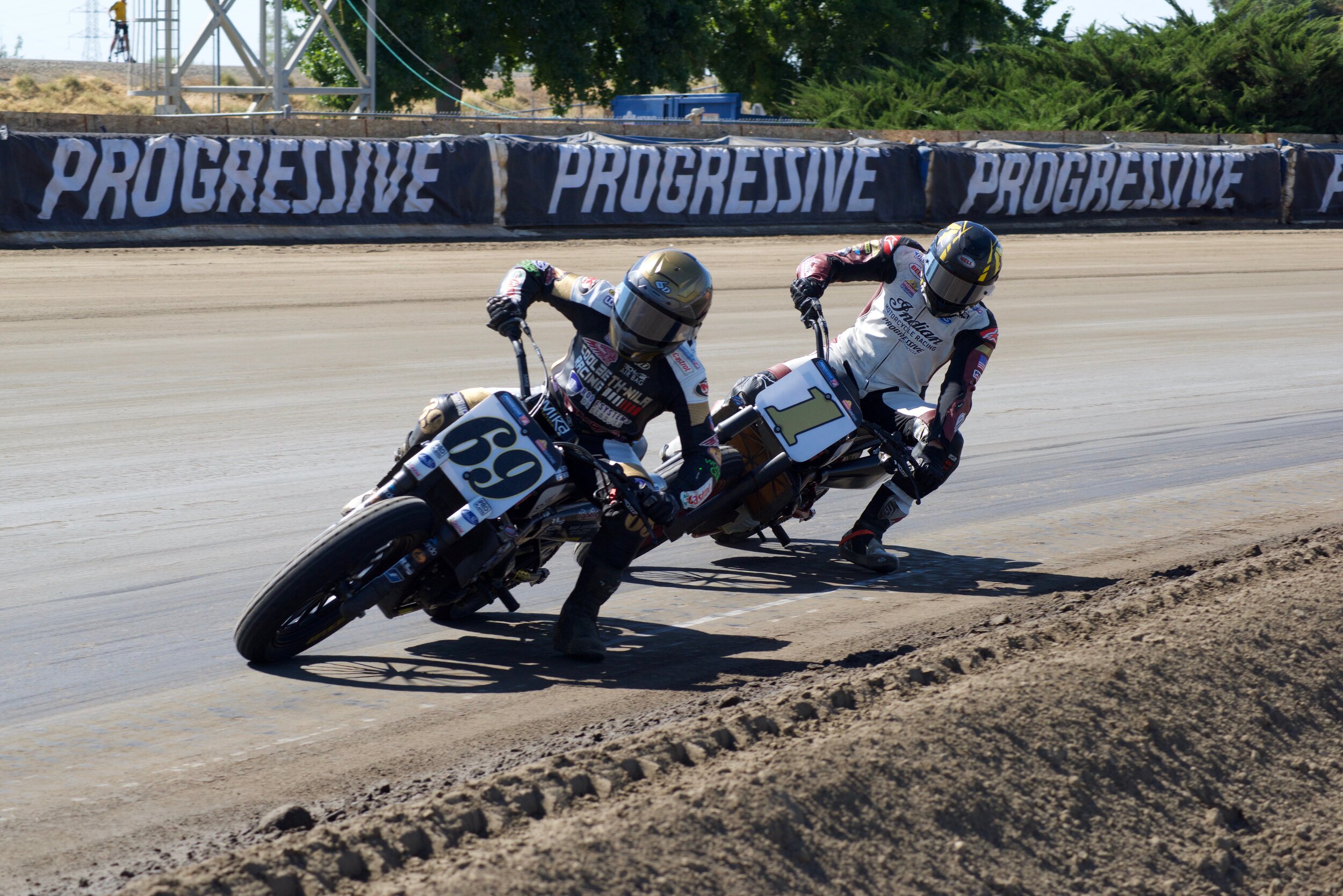


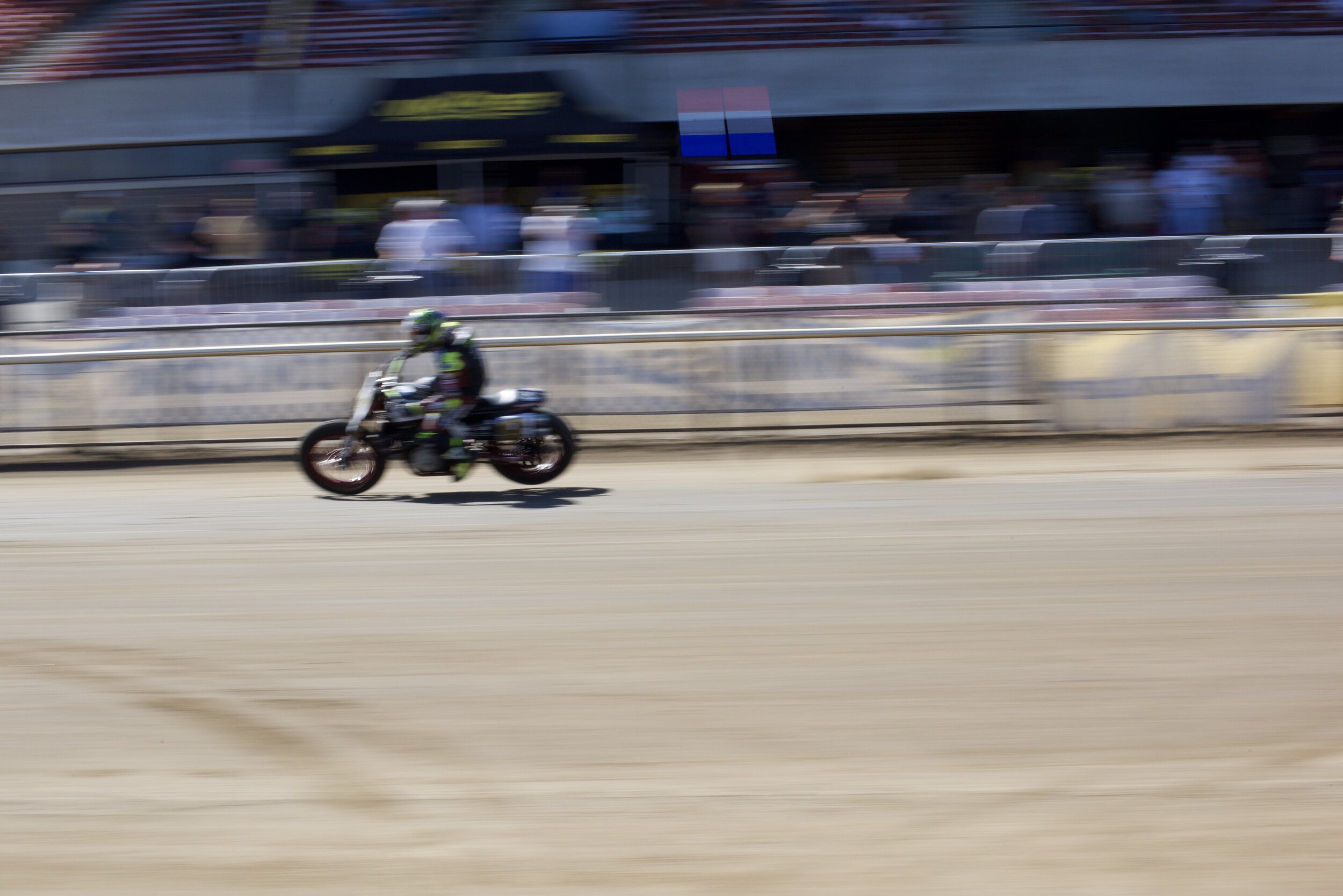

The Super Twins are going 140-plus mph as they approach the turns, and you can hear the rear tires skittering and sliding as the riders sit up and begin to rotate the bike into the turn.
The riders go through the turns with such seeming ease. But if you are standing next to the track the speed and energy of the bikes going by takes your breath away.
Racers wear a steel “shoe” on their left foot strapped to their boot. It allows them to put their foot down for balance and support in the turn. Unlike road racing, the rider doesn’t hang off the bike. In the turn they sit up on the bike, slide forward toward the tank and hold it under them by shoving the left side of the handlebar down toward the track and keeping their right elbow high.
The riders slide the rear of the bike as they go into the turn. They almost never use the brake. On mile tracks riders lean a little more with the bike than on the shorter tracks, because the track tends to be a bit stickier when rubbered in, but that changes as the races proceed.
On the straights they lay down on the tank. When tucked in, some of the guys let go of the bar with their left hand and hold the fork tube until it’s time to sit up for the turn.
On the whole the racers are remarkably young, teenagers some of them, but there is a fair contingent of seasoned riders.
Lined up on the front straight along the infield are the transports and tents of the big factory teams with the privateers pitting in a line down toward turn four. The factory teams have the bikes lined up in a row with a mechanic for each racer hustling to get the bikes ready while the riders relax. The independent riders have to put in a bit more work.
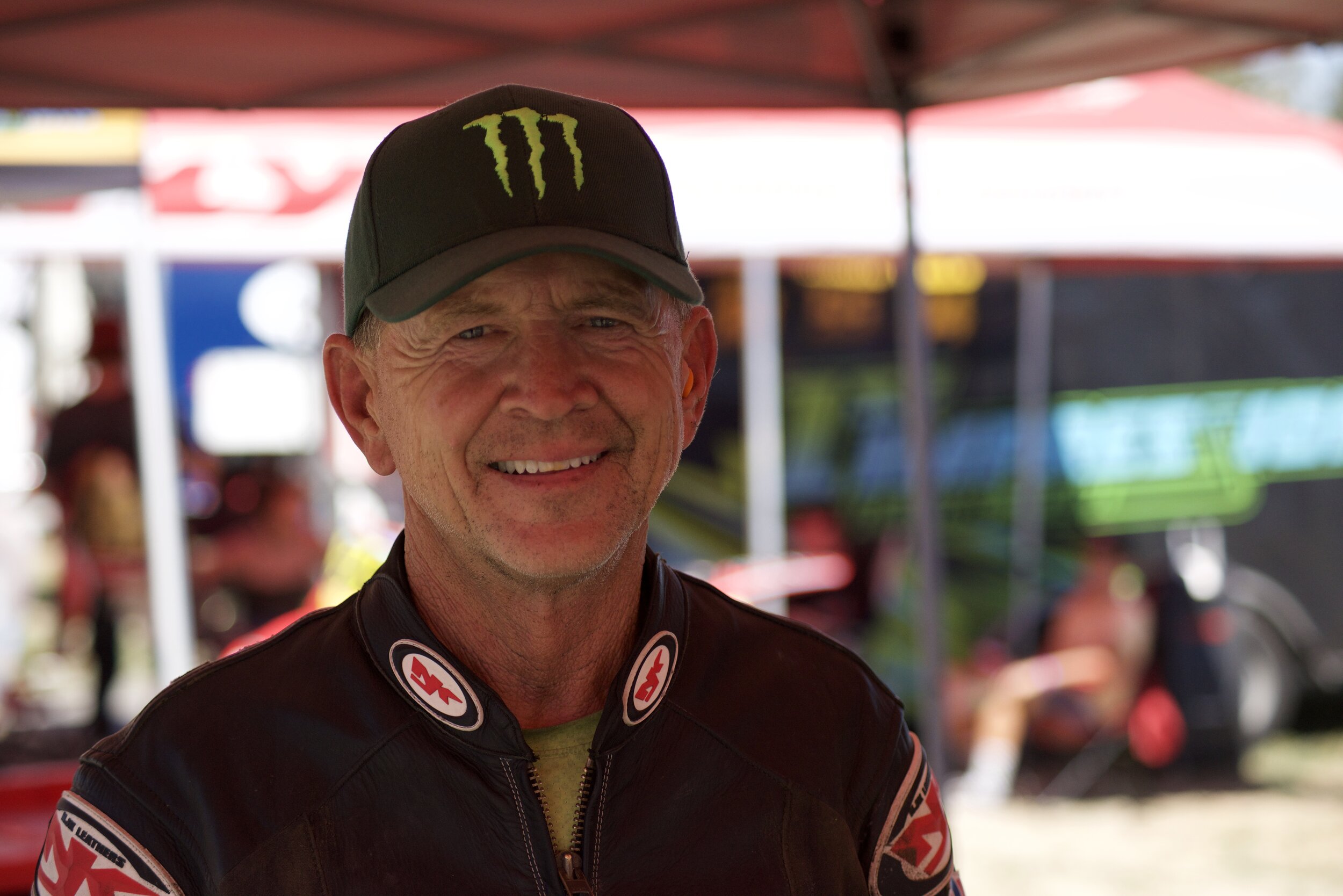
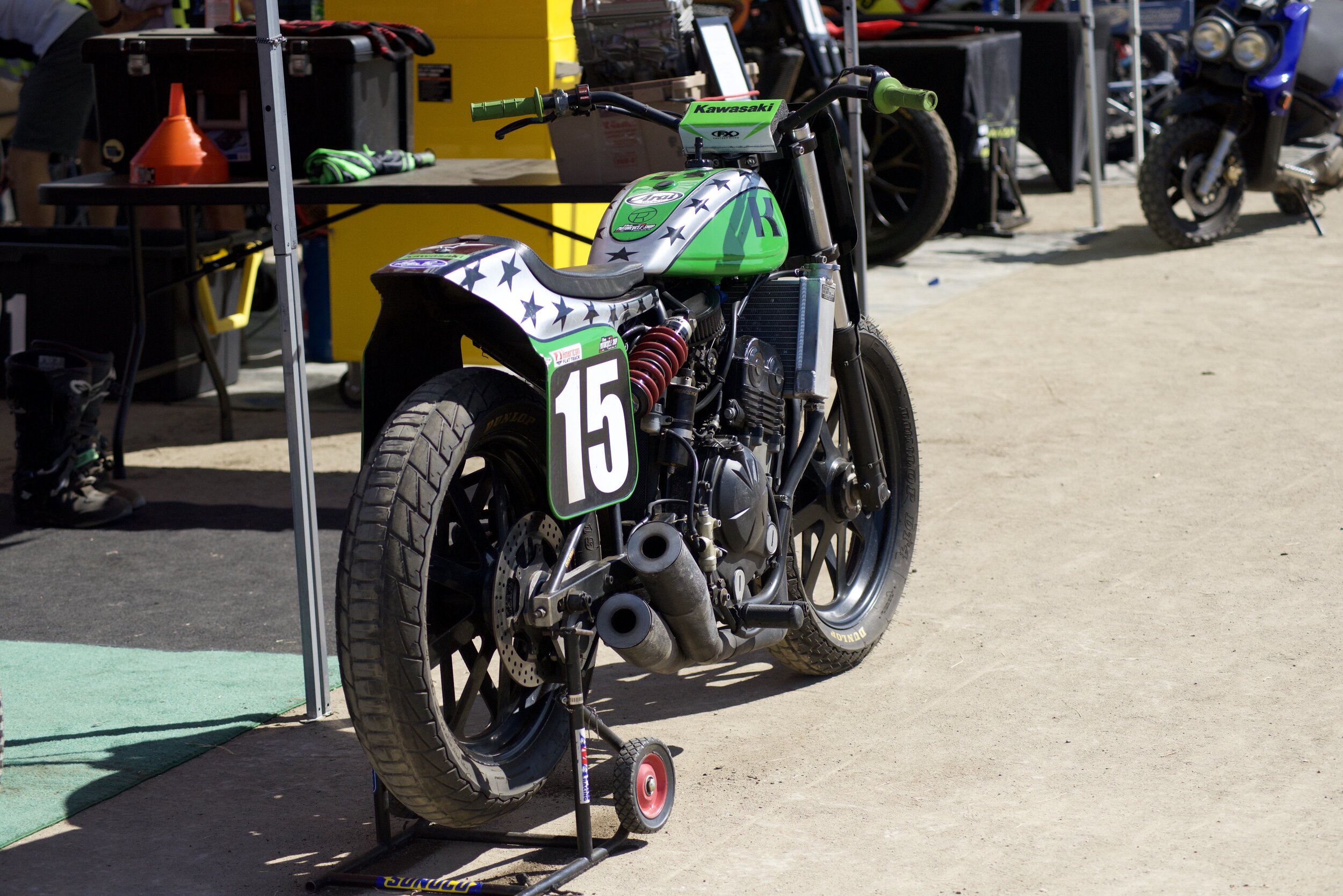
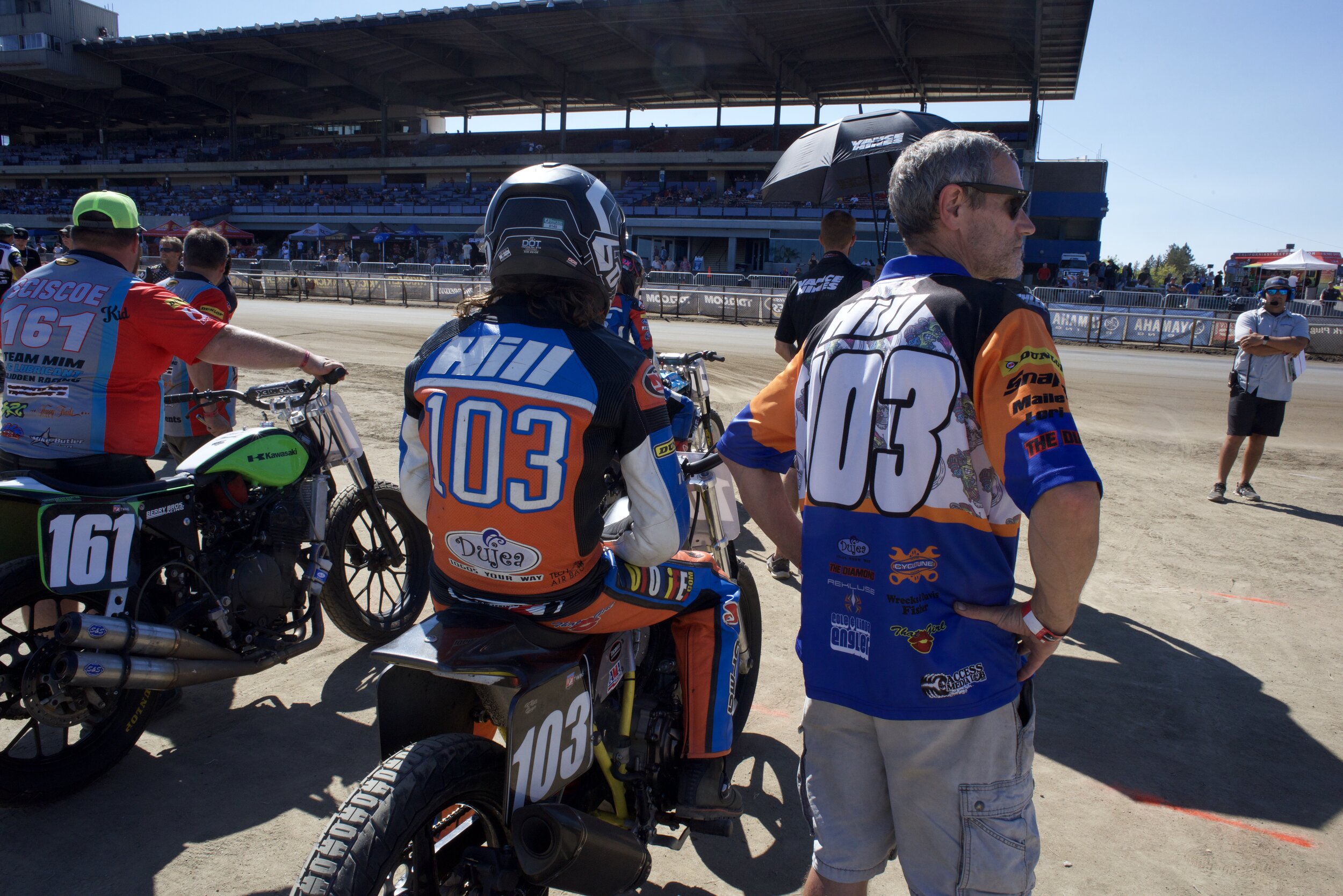

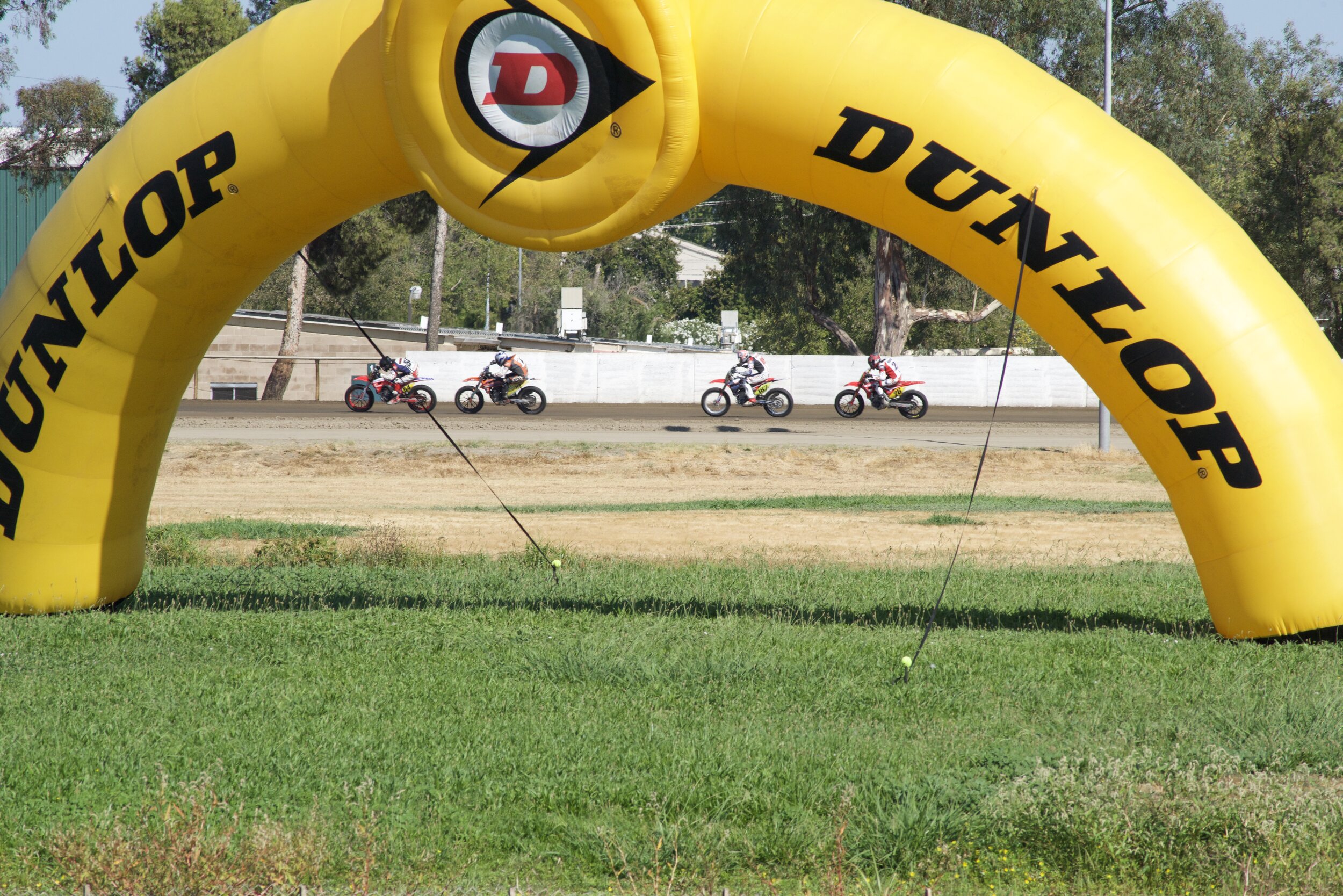
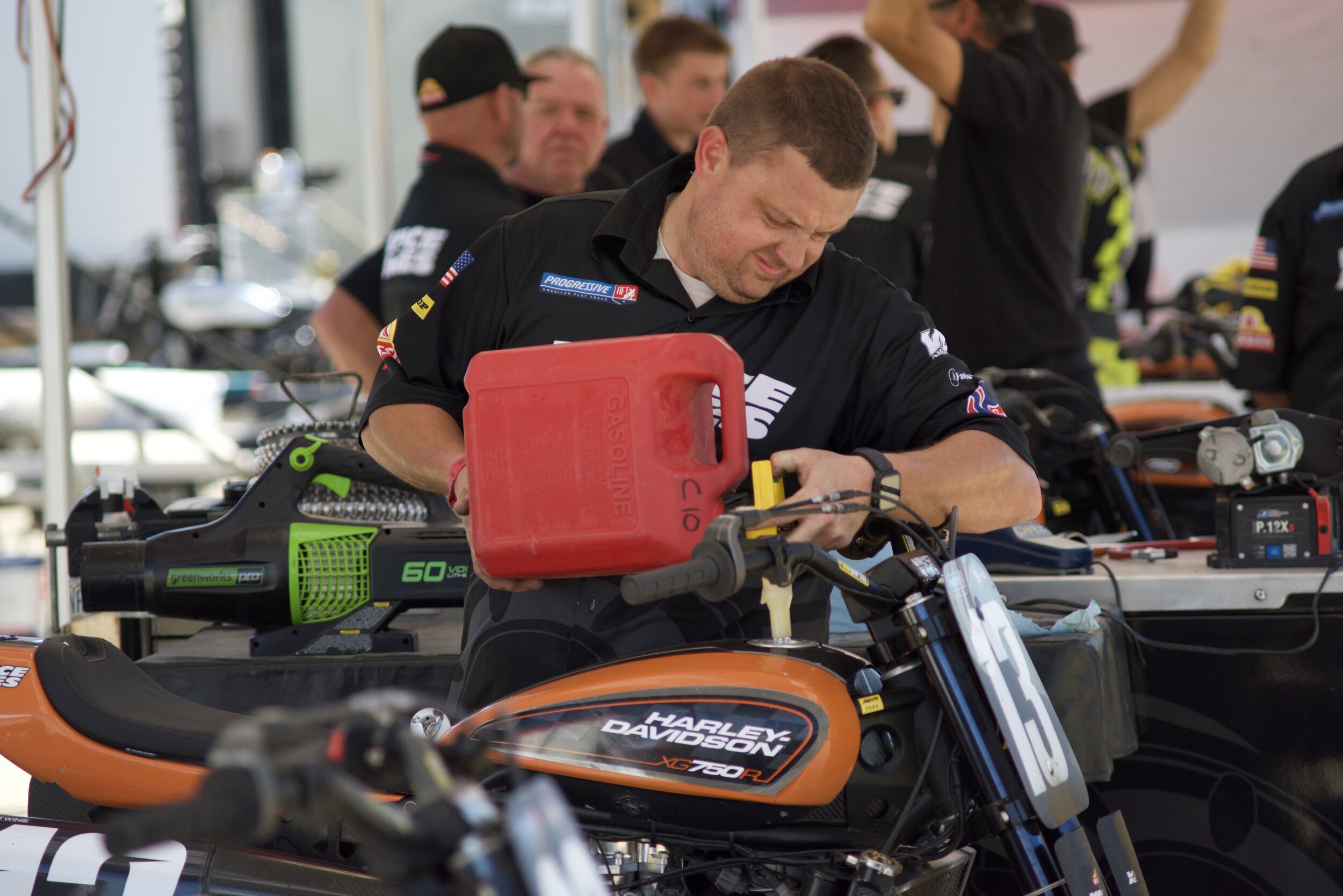
Sunday afternoon, about halfway down the line of pits, Gary Ketchum, 61, of Tulsa was brushing off his Kawasaki with a broom. His girlfriend Eileen Flemming was his sole pit crew.
“Being a privateer,” said Ketchum. “I couldn’t do it without her.” It’s a real team effort. Flemming helps with the bike and handles the paperwork to get signed up for races as well as helping with the driving.
Ketchum was the oldest rider competing at the mile this year. He believes he is the oldest active competitor in the AMA AFT series, a fact he is proud of.
He says he is also the oldest rider to earn a national number plate. Three-years-ago, he made the main at Sacramento. Traditionally a rider who makes the main at a national race earns a national number. He finished 15th and chose the number 15 for his plate. To earn a national number is a prestigious thing and damn hard to do, especially at the age of 59.
“I started racing mini-bikes when I was 8,” said Ketchum. “I quit for about 30 years but started back about 12 years ago.”
On Sunday he missed qualifying by three-tenths of a second. The brake caliper on his Kawasaki was dragging and slowing him down.
To be sure, the factory riders (and the well funded) dominate, but there are opportunities for the independent rider to make a mark and pick off a podium here and there.
The front row of the Production Twins main prepares for the start.
Like all racing this is a family sport. A fact that is evident in the pits from all the kids, girlfriends and wives involved in the teams. In fact, three of the sport’s brightest stars are related. Briar Bauman is leading the points in the Super Twins season. His brother-in-law Cory Texter is the Production Twins champion and he is married to the all-time win leader in the AFT Singles division, Shayna Texter-Bauman.
Bauman is teamed with Jared Mees, the most successful rider currently competing, 60 premier class wins, to ride the factory FTR750 Indians. Coming to Sacramento, Mees and Bauman were neck and neck for the championship. But Mees dominated both Sacramento races to take the lead by 4 points over Bauman.
In the Production Twins class, Yamaha-mounted Cory Texter, won both of his mains to clinch his second championship in the class. On Sunday Texter had a great battle with Harley-mounted Chad Cose, swapping the lead several times before just holding him off at the line. On the cool-down lap Texter lost it and crashed into the air fence on the first turn. He was unhurt, picked up his bike, and remounted to come back around and take a victory lap with the checkered flag.
Max Wale, No. 18, on the factory KTM leads Yamaha-mounted Morgan Mischler, No. 13, into turn one. The Singles races were close-fought affairs all weekend.
In the Singles division, Honda-mounted Trever Brunner won both races after an intense three-way battle with Dallas Daniels on the Yamaha and KTM-mounted Shayna Texter-Bauman.
Daniels, who was leading the AFT Singles class with four wins coming to Sacramento, has one of the hottest hands on the track. He has crossed over into the Production Twins class a few times this year and nabbed three wins and a second out of four races.
It was over 100 degrees on the track and infield. When it came to the racing, everything in the pits slowed down as the heats and mains fired off. Crews paused to watch the bikes go by and then turned to watch bikes on the huge big-screen mounted high over the finish line as the riders went down the back straight and into turn three.
The racing was good. As good as anything you will see and no big crashes.
The heat slowly subsided and the shadow of the grandstand overtook the track. The last main lined up and the bikes roared down the front straight and all was good with the world for a moment.






